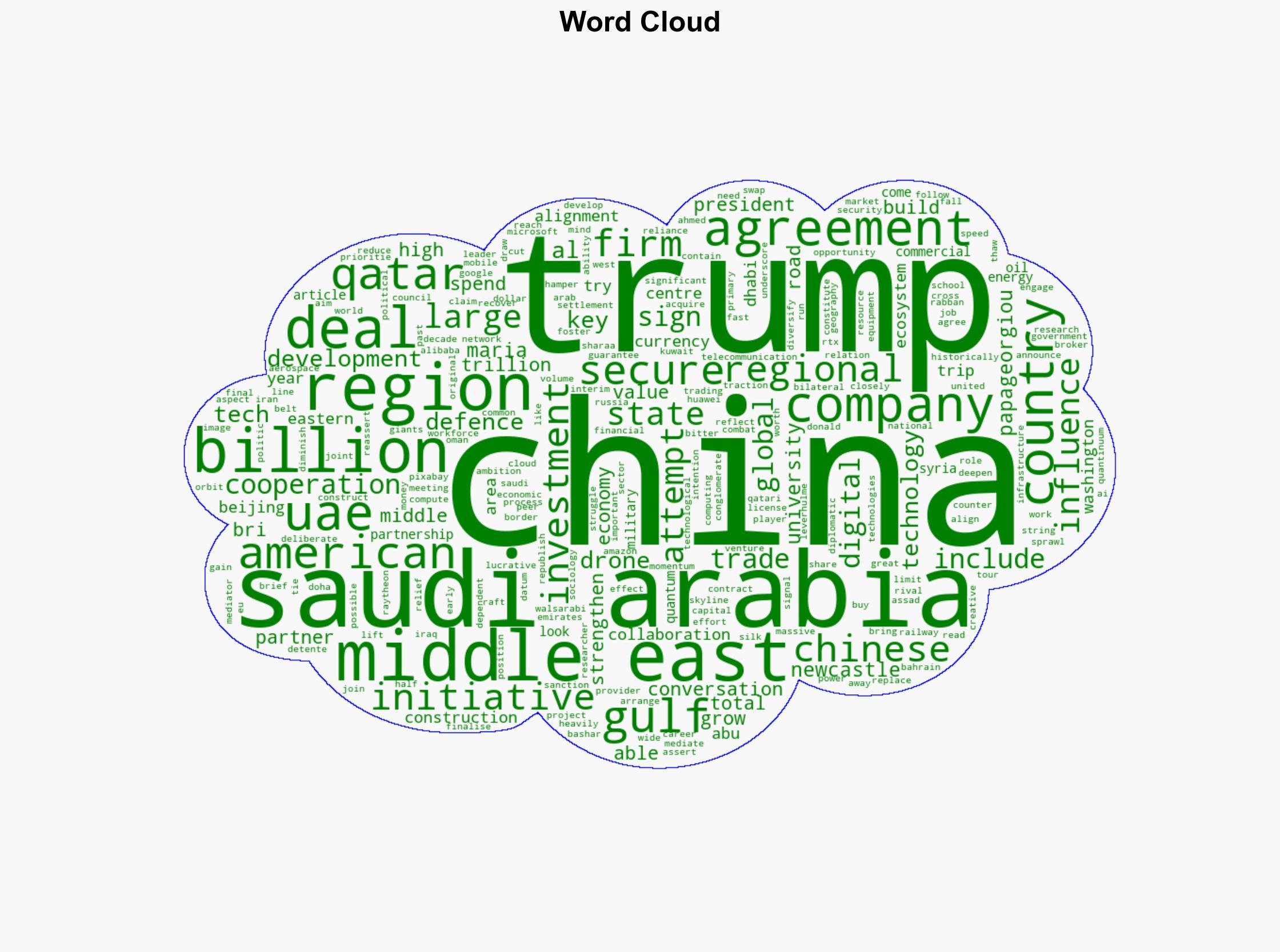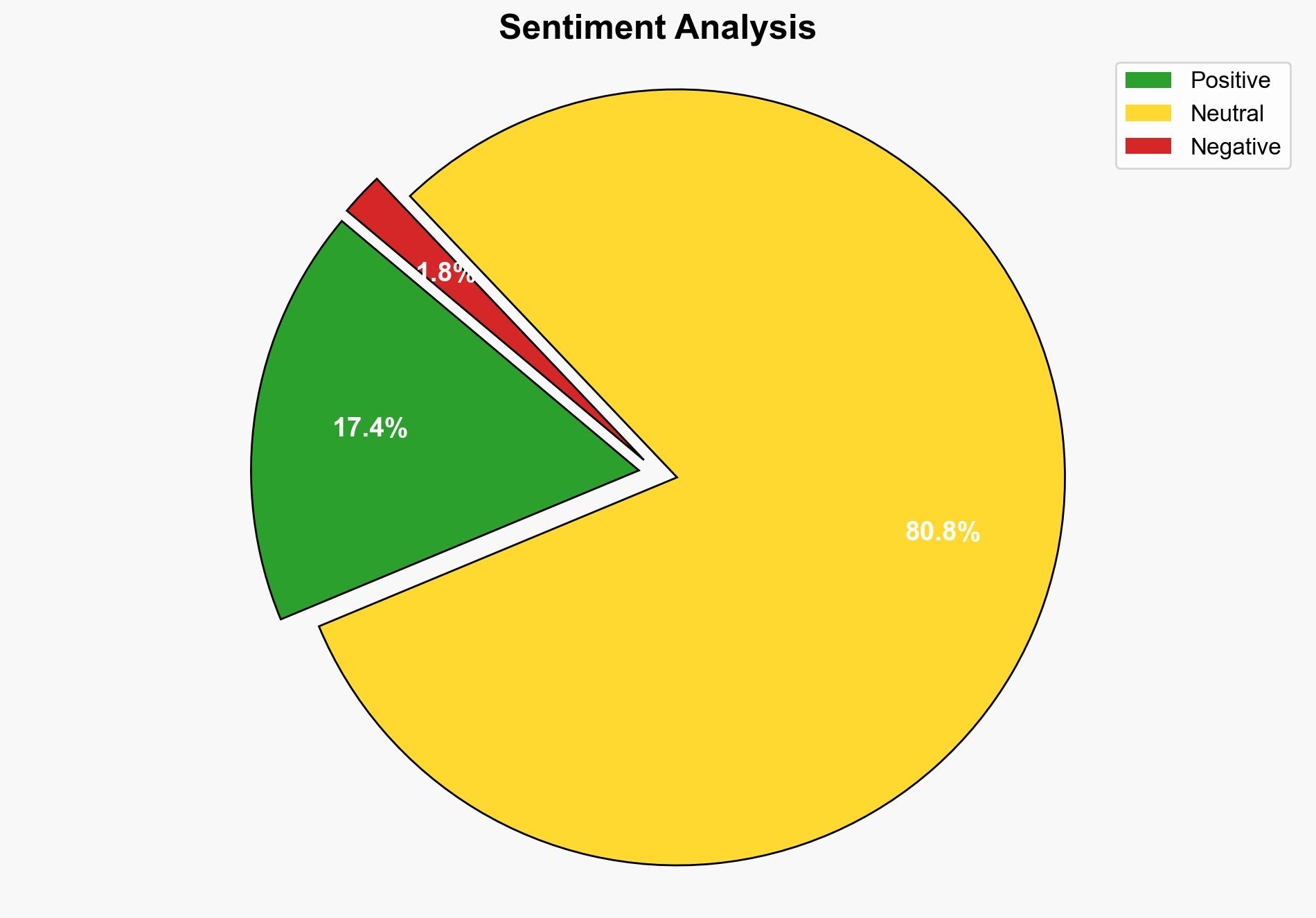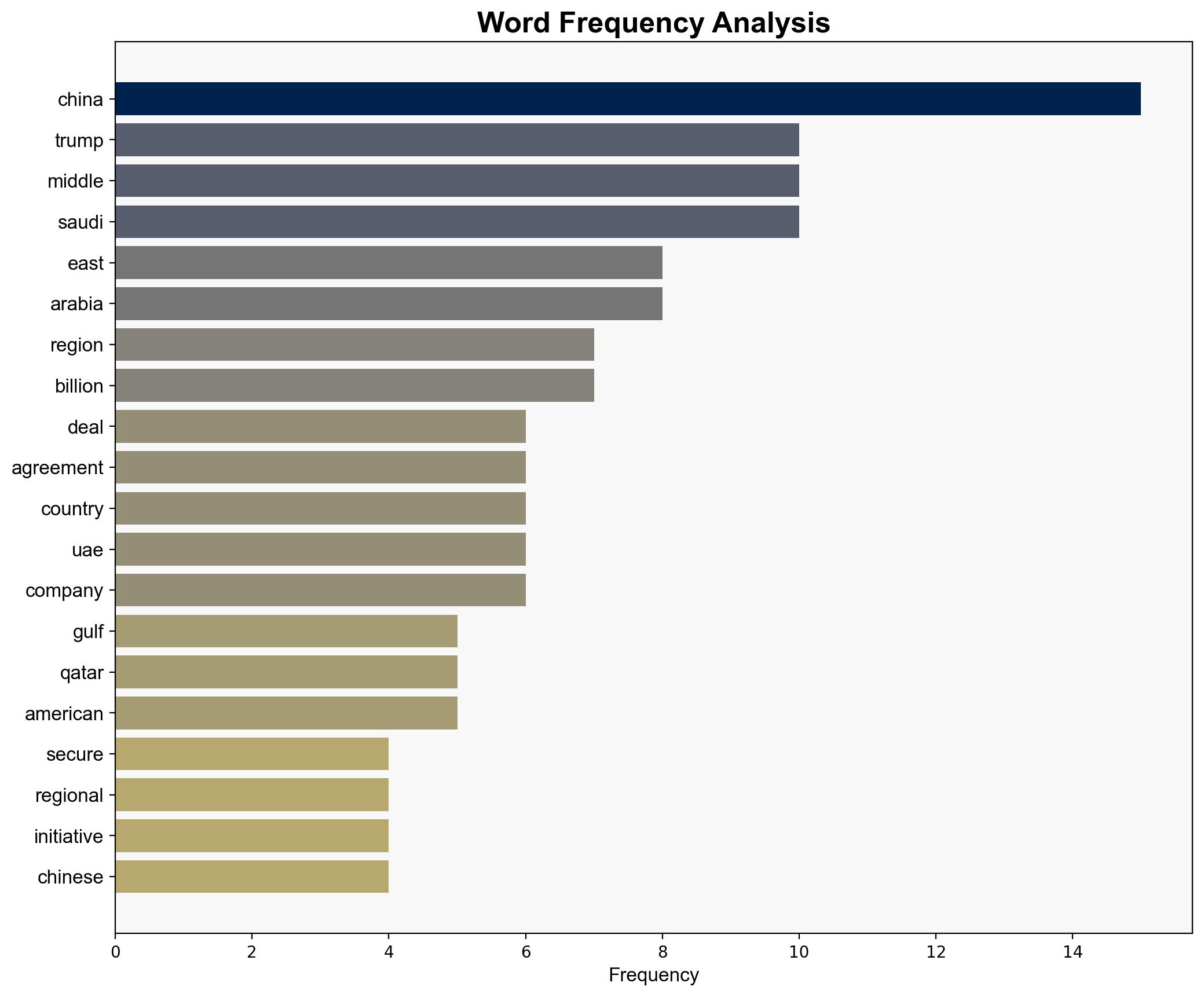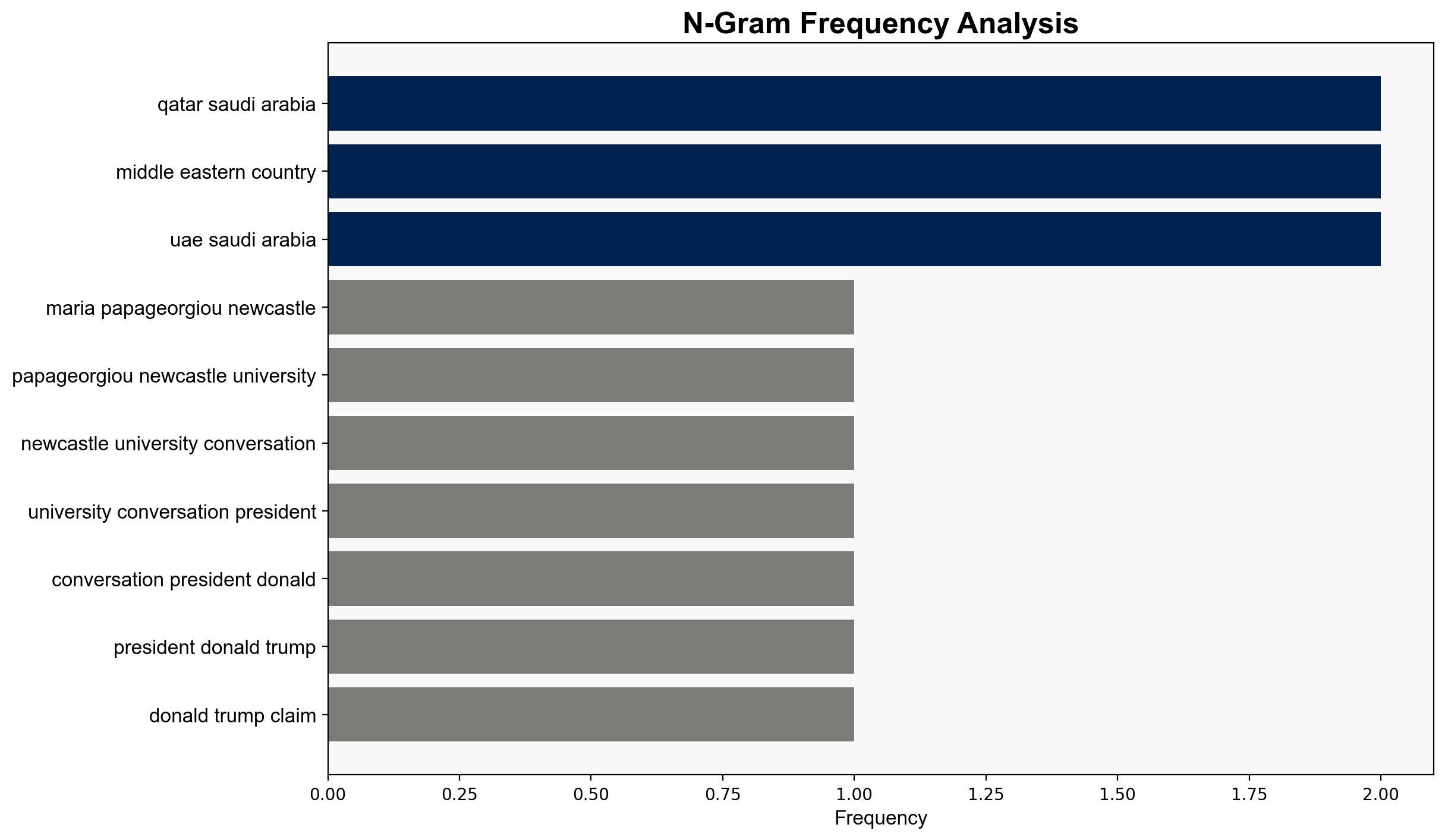Trumps Middle East Pivot aims to counter Chinas rising Influence – Juancole.com
Published on: 2025-06-08
Intelligence Report: Trumps Middle East Pivot aims to counter Chinas rising Influence – Juancole.com
1. BLUF (Bottom Line Up Front)
The strategic pivot by Donald Trump towards the Middle East is a calculated effort to counter China’s expanding influence in the region. This initiative involves strengthening ties with Gulf states through economic and technological agreements, aiming to draw these nations away from China’s orbit. Key recommendations include reinforcing diplomatic engagements and expanding economic partnerships to maintain regional stability and counterbalance China’s Belt and Road Initiative (BRI).
2. Detailed Analysis
The following structured analytic techniques have been applied to ensure methodological consistency:
Causal Layered Analysis (CLA)
Surface events include Trump’s agreements with Middle Eastern countries, while systemic structures reveal a shift in alliances. The worldview reflects a competitive geopolitical landscape, with myths centered on economic prosperity and security.
Cross-Impact Simulation
Potential ripple effects include shifts in regional alliances and economic dependencies, impacting trade and security dynamics.
Scenario Generation
Scenarios range from increased U.S. influence and regional stability to potential escalation of tensions if China’s interests are threatened.
Cognitive Bias Stress Test
Biases such as overestimating U.S. influence or underestimating China’s economic leverage are addressed through structured challenge.
Network Influence Mapping
Mapping reveals key players in the region, including economic and technological partnerships that influence regional dynamics.
Narrative Pattern Analysis
Ideological narratives focus on economic growth and technological advancement as tools for geopolitical influence.
3. Implications and Strategic Risks
The strategic pivot may lead to increased competition between the U.S. and China, potentially destabilizing regional alliances. Economic dependencies on China could pose vulnerabilities, while technological collaborations may expose cybersecurity risks. Military agreements could escalate regional arms races.
4. Recommendations and Outlook
- Enhance diplomatic efforts to solidify alliances with key Middle Eastern nations.
- Expand economic and technological partnerships to counterbalance China’s influence.
- Monitor regional developments to anticipate and mitigate potential conflicts.
- Scenario-based projections: Best case – strengthened U.S. influence and regional stability; Worst case – increased tensions and economic dependencies on China; Most likely – a balanced competition with ongoing diplomatic engagements.
5. Key Individuals and Entities
Donald Trump, Maria Papageorgiou, Quantinuum, Al Rabban Capital, Raytheon, Huawei, Alibaba, Amazon, Microsoft, Google.
6. Thematic Tags
national security threats, cybersecurity, counter-terrorism, regional focus





